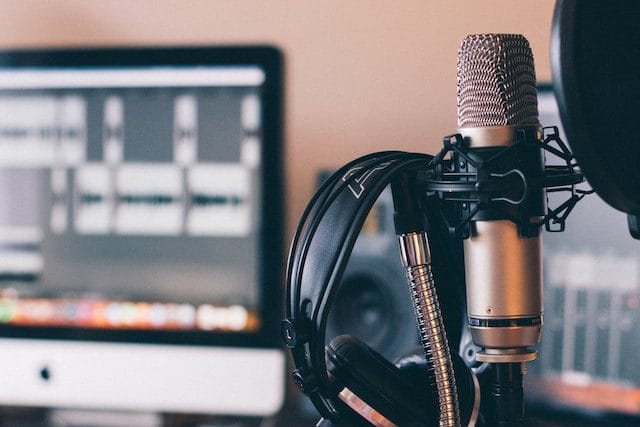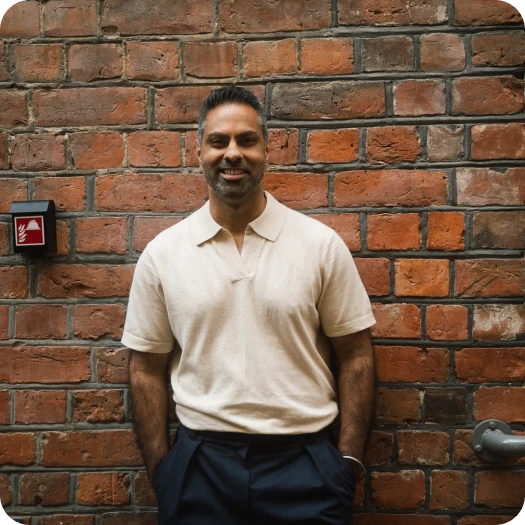How To Create A Podcast In 10 Easy Steps


Starting a podcast can feel overwhelming, especially if you’re not familiar with the tech. On my podcast, “I Will Teach You to Be Rich,” I’ve learned the ins and outs of creating a show that people love. To help you start your own podcast, I’ve broken down the process into a few simple steps.

1. Pick A Podcast Topic That Fires You Up
Before you hit record, it’s essential to have a clear plan. From choosing your podcast topic to understanding your audience, laying this groundwork will make the entire process smoother and help your podcast stand out.
Your first task: pick a podcast topic you love. Your enthusiasm will keep listeners hooked and keep you going for the long run. Choose something you can speak on endlessly—whether it’s personal finance, fitness, or pop culture. Just make sure it’s something that excites you and offers unique perspectives.
Understand Your Ideal Audience
Now, who’s your podcast for? Who do you WANT to speak to? Are they entrepreneurs, tech enthusiasts, or hobbyists? For instance, if your podcast is about entrepreneurship, your audience might be aspiring entrepreneurs in their 20s and 30s, possibly with a keen interest in personal development and innovation.
Double-Check The Long-Term Potential
Next, think about the scalability of your chosen topic. If you choose a topic like personal finance, for example, it’s broad enough to cover various sub-topics like saving, investing, budgeting, and debt management, yet specific enough to attract a targeted audience interested in financial well-being.
Study Your Competition
Before jumping in, see what other podcasters in your niche are doing. Pay attention to their content, audience interaction, and format. You don’t want to copy them, but understanding what works (and what doesn’t) can help you carve out your own space.
Select a Podcast Format
Your podcast’s format will shape the experience. Popular options include:
- Solo: Just you and the mic. It’s perfect for building a personal connection, but there’s no one to save you if you start talking about your cat’s dietary habits for too long.
- Co-hosted: Share the stage with a co-host. The challenge? It’s like herding cats to get everyone on the same schedule.
- Interview: Bring in guests, ask them the tough questions, or just chat about life. The catch? You’re at the mercy of your guests’ schedules and moods.
- Panel or Roundtable: Multiple people, often experts, discussing a topic. It’s like a dinner party debate but without the awkwardness of passing the peas.
- Storytelling: Narrating stories across episodes. No pressure, but your listeners are expecting the next ‘Game of Thrones.’
- Educational: You’re the teacher, and the podcast is your classroom. Great for deep dives into topics but remember–even the best subjects can be dull without a bit of spice.
- News-Related Commentary: Current affairs enthusiasts, you can be the source of wisdom on the latest happenings–so long as you keep things timely.
- Hybrid Format: Can’t decide? Mix and match!
How Long Should Episodes Be?
There’s no “right” length for an episode. Think about your content and your listeners. Some topics might need deep dives, while others are better kept short. Consider when and where your audience listens—on their commute, at the gym, etc.—and match your episodes to their routine.
Keep A Consistent Schedule
Whether you post daily, weekly, or monthly, consistency is key. Many podcasters stick to a weekly release schedule, which gives you enough time to create quality content without overwhelming yourself or your audience.
2. What Will People See When They Look At Your Podcast?
This is the fun part! Your podcast’s name, cover art, and music all contribute to your brand identity, so make sure it represents what your podcast is all about at a glance.
Pick a Catchy Name
Choose a name that’s memorable, easy to search, and reflects your topic. Avoid anything too long or confusing.
Create Eye-Catching Cover Art
Your cover art should grab attention and look good in small sizes (think mobile screens). Make sure it’s consistent with the tone of your podcast.
Set the Mood With Music
Pick intro and outro music that matches your show’s vibe—whether it’s chill, energetic, or something else. Be sure to use royalty-free music or hire someone to create custom tunes.
3. Use Free Or Cheap Equipment
You don’t need fancy equipment to start. Here’s what you’ll need:
- Microphone: Invest in a decent mic to improve your sound quality.
- Headphones: These help catch audio issues while you record.
- Recording software: Free tools like Audacity or GarageBand will get the job done.
As your podcast grows, you can upgrade your gear, but don’t overcomplicate it at the start.
4. Plan, Record And Edit Your First Episode
Your first episode is your chance to hook your audience. Plan it out carefully. What’s your main topic? What points do you want to cover? Whether you go with a script or just an outline, make sure you stay on track and keep it engaging.
Once you’ve recorded your episode, it’s time to edit. Good editing can turn a decent episode into a great one. Here are some tips:
- Cut out the fluff: Keep your episode focused by trimming dead air and tangents.
- Balance audio levels: Make sure your voice isn’t drowned out by background music or guest voices.
- Add smooth transitions: Use music or sound effects to signal transitions between segments.
Editing takes practice, but it’s worth the effort to create a polished final product. When in doubt, consider outsourcing your editing to a freelance or in-house editor—after all, one of the best ways to be rich is to buy back your time.
5. Write Your Episode Descriptions
Your episode descriptions are just as important as the content itself—they’re the first thing listeners see before hitting play. Here’s how to craft them:
- Be a Tease: Grab attention with a teaser that pulls listeners in. Share just enough to get them curious, without giving away all the details.
- Use Keywords for SEO: Incorporate relevant keywords naturally so your episodes can be easily found. Think of it as breadcrumbing your way to new listeners.
- Include a Call to Action: Don’t forget to ask your listeners to subscribe, leave a review, or share your episode. You’d be surprised how much a simple ask can boost engagement.
- Highlight Episode Specifics: Mention any guests, secrets, or surprises in the episode. Give listeners a reason to press play.
Need an example? The IWT podcast is a great place to start. Check out some of our popular episodes below and study our descriptions as you go!
6. Choose A Podcast Hosting Platform
Your hosting platform is where your podcast lives online. It stores your episodes and distributes them to podcast directories like Apple Podcasts and Spotify. When choosing a host, consider:
- Storage and bandwidth limits.
- Distribution features.
- Analytics to track your performance.
A good platform makes it easy to grow and manage your podcast as it scales. To start with, you can host your podcast directly on Spotify for free, then use the tool in your dashboard to make your podcast available on all platforms.
The world wants you to be vanilla...
…but you don’t have to take the same path as everyone else. How would it look if you designed a Rich Life on your own terms? Take our quiz and find out:
7. Launch And Promote Your Podcast
You’ve launched your podcast—now what? Time to promote it!
- Submit to podcast directories like Apple Podcasts, Spotify, and Google Podcasts. This gives you the highest chance for potential listeners to discover you.
- Use social media to share behind-the-scenes content, episode teasers, and updates. Be sure to use relevant hashtags to reach your target audience.
- Leverage your network: Spread the word among friends, family, and colleagues. You never know when someone will be the perfect new listener.
- Send an announcement: If you have an email list (and you should), share the news about your podcast launch. You could also promote your newsletter as a way to stay up-to-date on new episodes and other updates.
- Create a website for your podcast as a hub for your episodes, show notes, and more. Be sure to include transcripts to keep your podcast accessible.
Consistent promotion will help you grow your audience and keep listeners coming back for more. Remember—every big podcaster started somewhere.
8. Monetize Your Podcast
So, you’ve got a podcast, and it’s awesome. But let’s talk about turning that awesomeness into cash. Monetizing your podcast is simpler than you think. Here are some ways you can monetize:
- Sponsorships: Partner with brands that align with your content.
- Affiliate marketing: Promote products and earn commissions on sales.
- Listener donations: Platforms like Patreon let fans support your podcast directly.
- Selling merchandise: Offer branded items like T-shirts or mugs.
- Hosting live events: Engage with your audience through live shows or workshops.
Remember, monetization takes time, so focus on building a loyal audience first. Wondering how much you can make with your new podcast over time? Check out my post How Much do Podcasters Make (+ how mine makes me millions).
9. Monitor Your Success
Tracking your podcast’s performance is essential to making sure you’re on the right track. Think of it as using a GPS to guide your journey.
- Dive into your analytics: Most hosting platforms offer analytics that show you listener numbers, demographics, and episode popularity—and it’s not as scary as it sounds, everything is clearly laid out so you’re not doing any math. Use this data to see what’s working and what’s not.
- Feedback is your friend: Encourage reviews and comments from your listeners. Social media and email are great channels for gathering feedback and making adjustments.
- Continuous improvement: Use what you learn to fine-tune your podcast. Maybe your audience loves the interviews but prefers shorter intros. Adapt based on these insights to keep growing and evolving.
Your podcast is an ongoing project. By keeping an eye on your performance and engaging with your listeners, you’ll keep improving and growing with every episode.
How Much do Podcasters Make (+how mine makes me millions).
If you liked this post, you’d LOVE my Ultimate Guide to Finding Your First Profitable Idea
It’s one of the best things I’ve published, and totally free – just tell me where to send it: